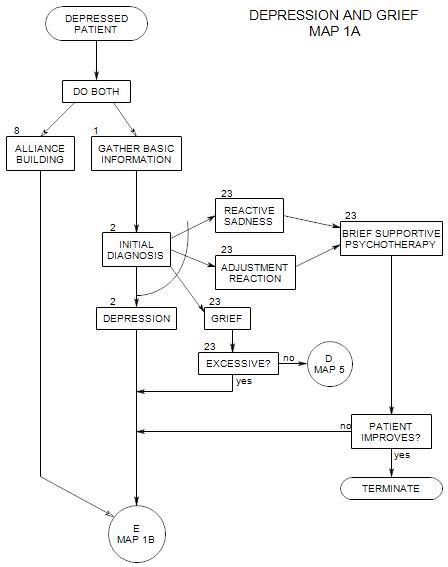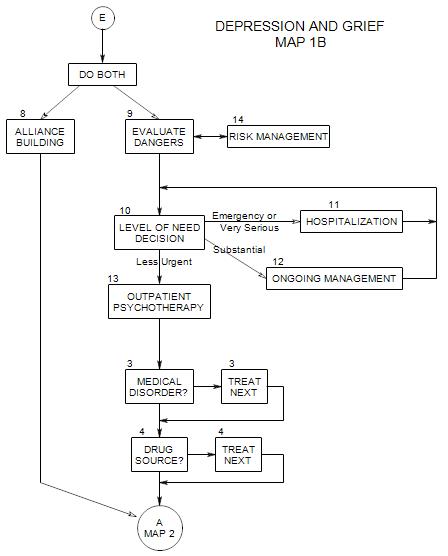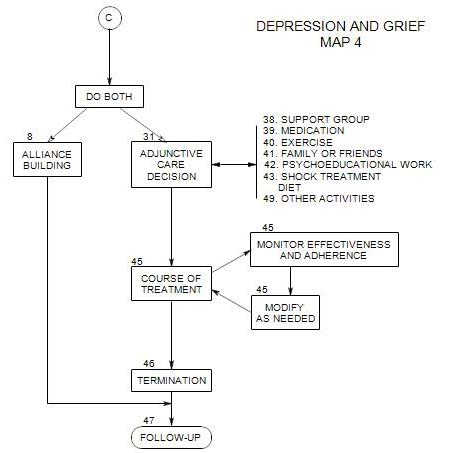DEPRESSION AND GRIEF MAPS: 1A | 1B | 2 | 3 | 4 | 5
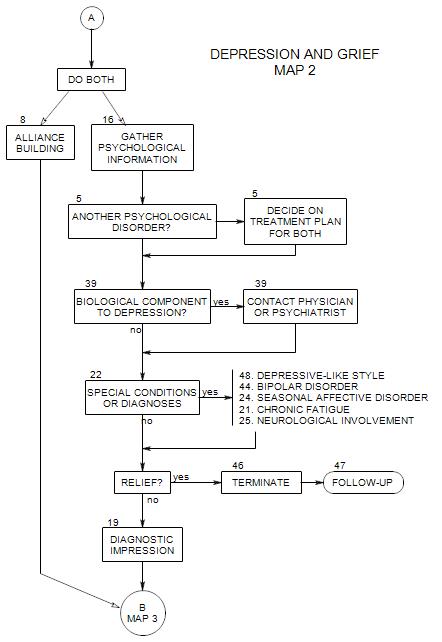
SECTIONS: 5 | 8 | 16 | 19 | 21 | 22 | 24 | 25 | 39 | 44 | 46 | 47 | 48

SECTIONS: 5 | 8 | 16 | 19 | 21 | 22 | 24 | 25 | 39 | 44 | 46 | 47 | 48
DEPRESSION AND GRIEF MAPS: 1A | 1B | 2 | 3 | 4 | 5
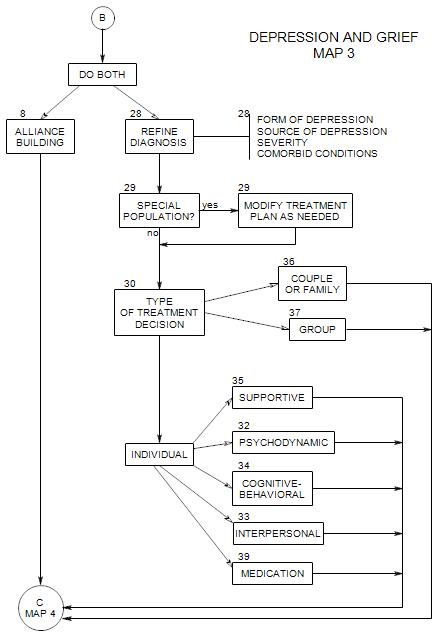
SECTIONS: 8 | 28 | 29 | 30 | 32 | 33 | 34 | 35 | 36 | 37 | 39

SECTIONS: 8 | 28 | 29 | 30 | 32 | 33 | 34 | 35 | 36 | 37 | 39
37. GROUP THERAPY
-
Coordinates with Section 30, [form of treatment decision] on Map 3.
This should be distinguished from psycho-educational groups, that give information about depression, encourage people to share their experiences with each other, to lessen their sense of isolation, give people tangible and interpersonal resources, encourage people to develop social contacts, etc. See Section 42 for more about these groups.
Here we mean open-ended, psychodynamic groups, that may or may not be restricted to depressed people.
These groups could be run by clinics, hospitals, group practices, or individual therapists.
They are used when
- support from peers is an important part of treatment
- a person can learn by observing the treatment of others
- the patient needs practice in interacting
- it is important to observe the patient interact with others as part of his/her treatment
